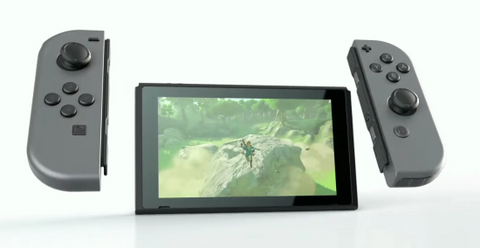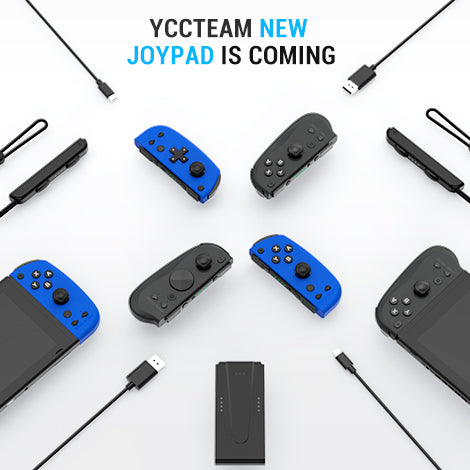We Can Help You Fix Your Nintendo Switch Controller Connection Issue
Nintendo Switch is a popular gaming console that provides an immersive gaming experience to players of all ages. However, as with any electronic device, it's not uncommon to run into technical issues. One common problem that Nintendo Switch users face is their controller not connecting to the console. This issue can arise due to several reasons, including low battery, interference, or firmware issues. In this article, we'll take a closer look at the different reasons why your Nintendo Switch controller may not connect and provide comprehensive solutions to fix the problem.

Reasons Why Your Nintendo Switch Controller May Not Connect
1.Low Battery
One of the most common reasons why your Nintendo Switch controller may not connect is a low battery. When the battery is low, the controller may not have enough power to establish a connection with the console. To check the battery level of your controller, press the Home button on your controller, and look at the battery icon on the top-right corner of the screen. If the battery is low, charge your controller using a USB-C cable. You can either connect the cable to your Switch dock or directly to your controller.
2.Interference
Another reason why your Nintendo Switch controller may not connect is interference. Electronic devices, such as smartphones, laptops, and routers, can interfere with the signal between your controller and the console. To reduce interference, move your Switch console and controller away from other electronic devices. Additionally, you can try turning off other devices or switching to a wired internet connection to reduce interference.
3.Firmware Issues
Firmware issues can also cause your Nintendo Switch controller to not connect. If your console or controller's firmware is outdated, it may not be compatible with each other. To update your firmware, go to the Home menu on your Switch, select "System Settings," and then "System." From there, select "System Update" to check for any available updates. You can also update your controller's firmware by connecting it to your console and following the on-screen instructions.
4.Controller Connection Issues
Sometimes, your Nintendo Switch controller may not connect due to issues with the controller itself. If your controller has been damaged or dropped, it may not be able to establish a connection with the console. In this case, you may need to replace your controller or seek professional repair services

How to Fix Your Nintendo Switch Controller Connection Issue
Step 1: Check Your Controller's Battery
As mentioned earlier, a low battery can cause your controller to not connect to your Switch console. If your battery is low, charge your controller using a USB-C cable. Once your controller has been charged, try connecting it to your console again.
Step 2: Reset Your Controller
If your controller's battery is not the issue, the next step is to reset your controller. Here's how to do it:
Press and hold the Sync button on the back of your controller for 3 seconds.
Release the Sync button and wait a few seconds.
Press the Sync button again to connect the controller to your Switch.
Once you've reset your controller, try connecting it to your console again.
Step 3: Restart Your Switch Console
If resetting your controller didn't work, try restarting your Switch console. Here's how to do it:
Press and hold the Power button on your Switch for a few seconds.
Select "Power Options" from the menu that appears.
Select "Restart" and wait for your Switch to restart.
Once your console has restarted, try connecting your controller to it again.
Step 4: Reconnect Your Controller
If restarting your Switch console didn't work, the next step is to reconnect your controller.
Press and hold the Sync button on the back of your controller for a few seconds until the LED lights start flashing.
Press the Sync button on your console. It's located on the side of your console, next to the USB port.
Wait a few seconds for your controller to connect to your console. Once the connection is established, the LED lights on your controller will stop flashing.
Step 5: Update Your Console's Firmware
If none of the above steps worked, the issue may be due to outdated firmware on your Switch console. To update your console's firmware, follow these steps:
Go to the Home menu on your Switch.
Select "System Settings."
Select "System."
Select "System Update."
Follow the on-screen instructions to update your console's firmware.
Step 6: Seek Professional Repair Services
If none of the above steps worked, the issue may be due to a hardware problem with your controller or console. In this case, it's best to seek professional repair services. Contact Nintendo support or take your console to an authorized repair center to get it fixed.

In conclusion, a Nintendo Switch controller not connecting can be a frustrating issue, but it's not uncommon. The reasons why your controller may not connect can range from low battery to firmware issues. However, with the steps outlined in this article, you can troubleshoot and fix the issue yourself in most cases. If none of the above steps work, seek professional repair services to get your console fixed. With these solutions, you can enjoy your Nintendo Switch gaming experience without any interruptions.






